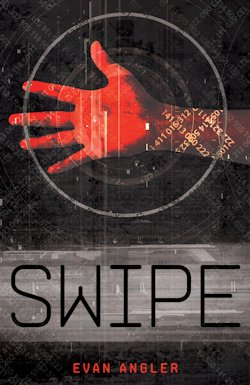|
American
Union’s West Coast is a baffling, lawless place. I made my way out here
recently after hearing the rumors that DOME’s hold in Sierra wasn’t as
strong as it is out East, and so far, the city hasn’t let me down.
It’s the tech capital of the
world; that’s first off. What Beacon has in economics and New Chicago
has in manufacturing, Sierra undoubtedly has in technology. And it
makes sense. Even beyond DOME’s diminished presence, there isn’t nearly
the same level of oversight and restrictions out here—fewer prying
eyes, more space to experiment . . . not to mention a healthy community
of entrepreneurs and tech start-ups that traces back to pre-Unity.
Sierra City fosters a certain
amount of, let’s just say, “outside the box” creative success over the
years, but to my mind, nothing better encapsulates this than the story
of Jerry Dunn.
I met Jerry a short while back
while strolling through Sierra’s Westerbury Street, the famously posh
residential area overlooking Sierra’s Pacific beaches. Jerry was on his
porch when I walked past, hanging clothing out to dry, and it caught my
attention that Jerry was Unmarked.
“You’re Markless?” I said,
staring at his empty wrist but somehow not believing it.
“All my life.” Jerry smiled and
went back to hanging a particularly fancy shirt.
“This your house?”
Jerry laughed. “Be awfully rude
of me to dry my clothes here if it weren’t.”
Still I couldn’t believe it. To
be Markless was to be out of the system, off the grid, flat broke
without any prospects for work or money. So how could a guy like that
end up with a house like this?
“Name’s Evan,” I said.
“Jerry. Jerry Dunn.” He stepped
down from his porch and shook my hand, a friendly smile plastered
across his face.
“I’m sorry. I don’t mean to
pry. I’ve . . . well, I’ve never seen a Markless with such a nice
place. Not to mention a wardrobe and furniture and—” I stopped myself,
though Jerry must have seen me sneaking a peek through the open window
over his shoulder.
He laughed. “Hey, why don’t you
come on in. You look like you haven’t eaten in a while.”
And maybe that was true. Or
maybe I couldn’t turn down the chance to see inside this Markless man’s
mystery house. Either way, Jerry soon took me inside and showed me
around.
He had a pre-Unity grand piano
in the living room, sofas and chairs surrounding it. A fireplace stood
off to the side; books and paintings filled the shelves and walls.
Patterned carpets lined the floors, kitchen shelves were neatly stocked
with food, the dining room held a thick oak table with candles at the
center.
We talked over lunch—home-cooked
soup and sandwiches.
“You couldn’t have bought any
of this,” I said. “So I can’t help but wonder—”
Jerry held his hand out before I
said anything insulting. “I traded for it. Don’t need to have a Mark to
trade something with a person. You give me what’s in your hand, I give
you what’s in mine—that’s as complicated as it needs to be.”
But now I really didn’t
understand. Traded? Traded what? What could Jerry
have that was worth trading a house over? Under the circumstances, his
success seemed totally impossible.
“No offense, but what could you
possibly have had that be worth this home?”
“Well,” he said proudly. “I
happened to be the lucky owner of a pre-Unity combustion engine sports
car. Flame red. Only one left of its kind. A priceless antique, some
might say. But to me—” he smiled “—it was worth precisely as much as
this here house.”
“But then where’d you get the car?”
And this was when things slowly
started coming into focus.
Jerry hadn’t lucked out. He
hadn’t stumbled upon some insane deal. He hadn’t done anything
unethical. He’d simply worked. Hard. The only way
he could without getting a Mark.
It
all began when Jerry picked up an old, pre-Unity pencil off the shore
of one of Sierra’s many junkyard beaches. Pre-Unity-style graphite
pencils aren’t worth much, but they aren’t so common either. So Jerry
had the bright idea that some Marked person might think the piece of
garbage was interesting enough to trade
|
for. He carried that pencil in
his pocket for two days before he found anyone who wanted it. He came
across a Marked teenager who liked to draw and was sick of doodling
exclusively on her virtual tablet. So she traded Jerry his pencil for a
wristwatch.
Now Jerry had a wristwatch. And
he carried that for nearly a week before some Marked man approached him
and asked for the time. Jerry told the man that he could do better than
give him the time—he could give him the watch! But only in exchange for
a fair trade—something like, say, the man’s fedora hat.
Now Jerry had a hat! He wore
that hat on his head for a couple of weeks before he found a Marked
woman willing to trade her winter jacket for it. Her husband loved
hats, and this one seemed unique. Her jacket, meanwhile, was not—even
though it was worth quite a bit more than the hat.
You can imagine how things
continued from here. Jerry traded that winter jacket for a nicer winter
jacket (a perfectly fair trade; the trader had specific tastes that
trumped pure material value). He then traded that winter jacket for a
rollerstick. The rollerstick for a tablet. The tablet for a tablescreen
computer. The tablescreen computer for a wallscreen television. The
wallscreen television for a vintage bicycle. The vintage bicycle for a
jet ski; the jet ski for a beat-up pre-Unity combustion car; that car
for the sports car; and finally, the sports car for the house. This
chain of trades took Jerry five and a half years of searching endlessly
for bargains, of talking to everyone he could find, of following leads
and knocking on doors and making mistakes along the way.
But the bottom line was that by
the end of it, Jerry had turned a chewed-up pre-Unity pencil into a
house.
From there, Jerry used the same,
remarkable brand of patience and stick-to-itiveness to fill that house
with everything he could ever want. And to this day, ten years later,
he trades what he has in his house for food or other disposable items.
Jerry has, quite literally,
turned one man’s garbage into another man’s treasure.
This got me thinking that maybe
this is what success is. On the outside, it looks like magic, like
someone turned a pencil into a beachside mansion. It looks impossible,
and it is easy to dismiss the whole thing as luck or a fluke or
whatever.
But the secret behind that magic
isn’t slight of hand or trickery. It’s a readiness to look where other
people don’t; it’s a belief in the inherent worth of everything—and
everyone—it’s a confidence that anything is possible given enough time,
energy, passion; and (perhaps above all) it’s a willingness to submit
to the frustratingly incremental nature of progress. Success doesn’t
happen in leaps and bounds. It’s stepwise, iterative. It’s in tiptoes
and sidesteps and the occasional hop, skip, or jump. It’s a grind! Luck
is involved—plenty of it—but it’s a game of luck that can be played as
many times over. A game that starts modestly, humbly, and hopefully. A
game that can be played until it is won.
This is not to say that Jerry’s
story could have happened to everyone. But it could
happen to anyone who’s willing to play the game by
its own tiresome rules.
I left Jerry’s house that day
with a new Markless friend. But I walked out having learned something,
too: big victories are no more than the long, arduously total of many
tiny victories along the way; it is always worth striving for goals,
whatever they may be, far off as they may seem; it is worth it even if—especially
if—you have to begin by rooting through the trash.
We are not entitled to our
dreams. No one will give them to us. But we can
earn them. And people will always be willing to
lend a helping hand, one very small step at a time.


|









